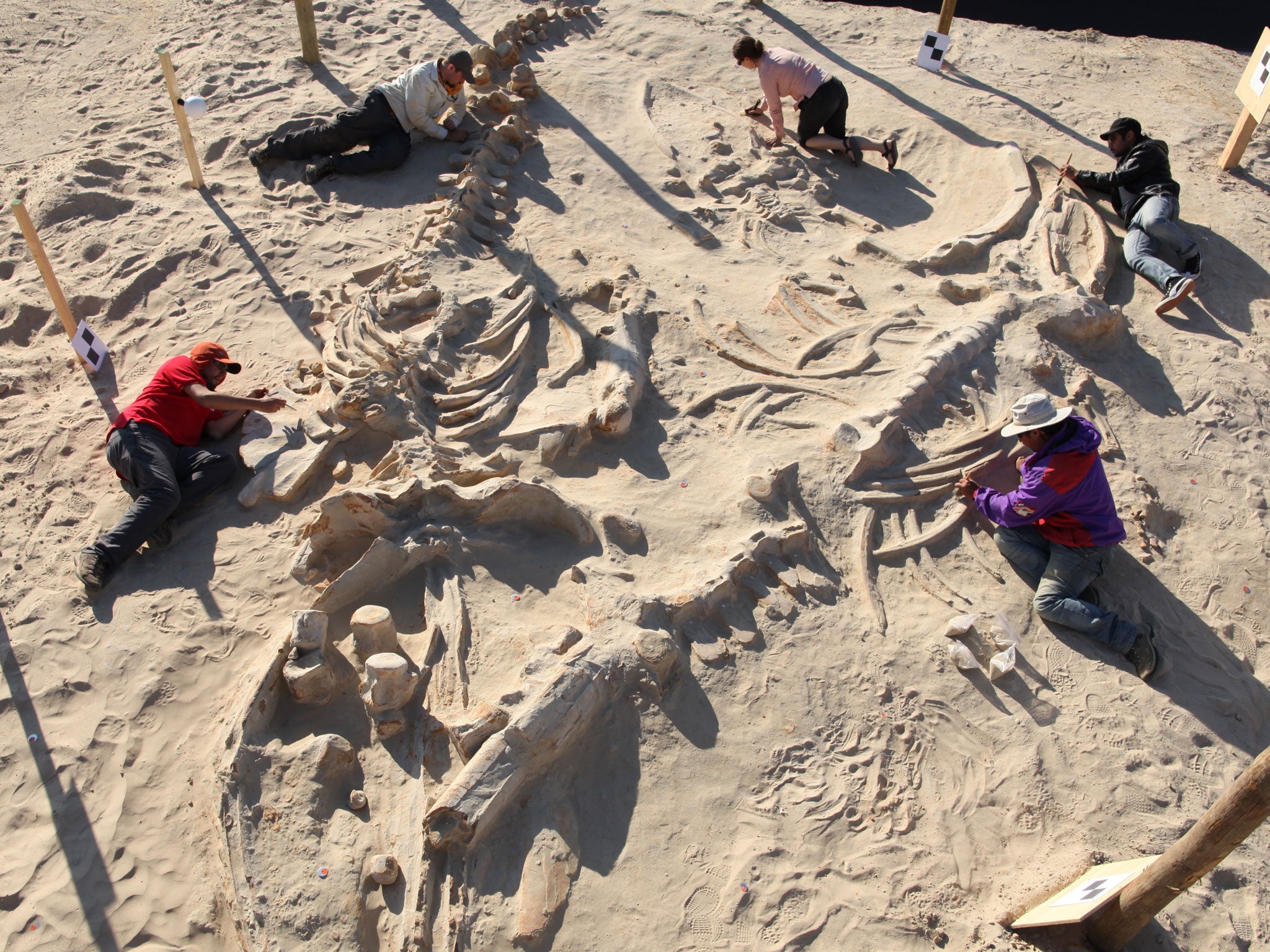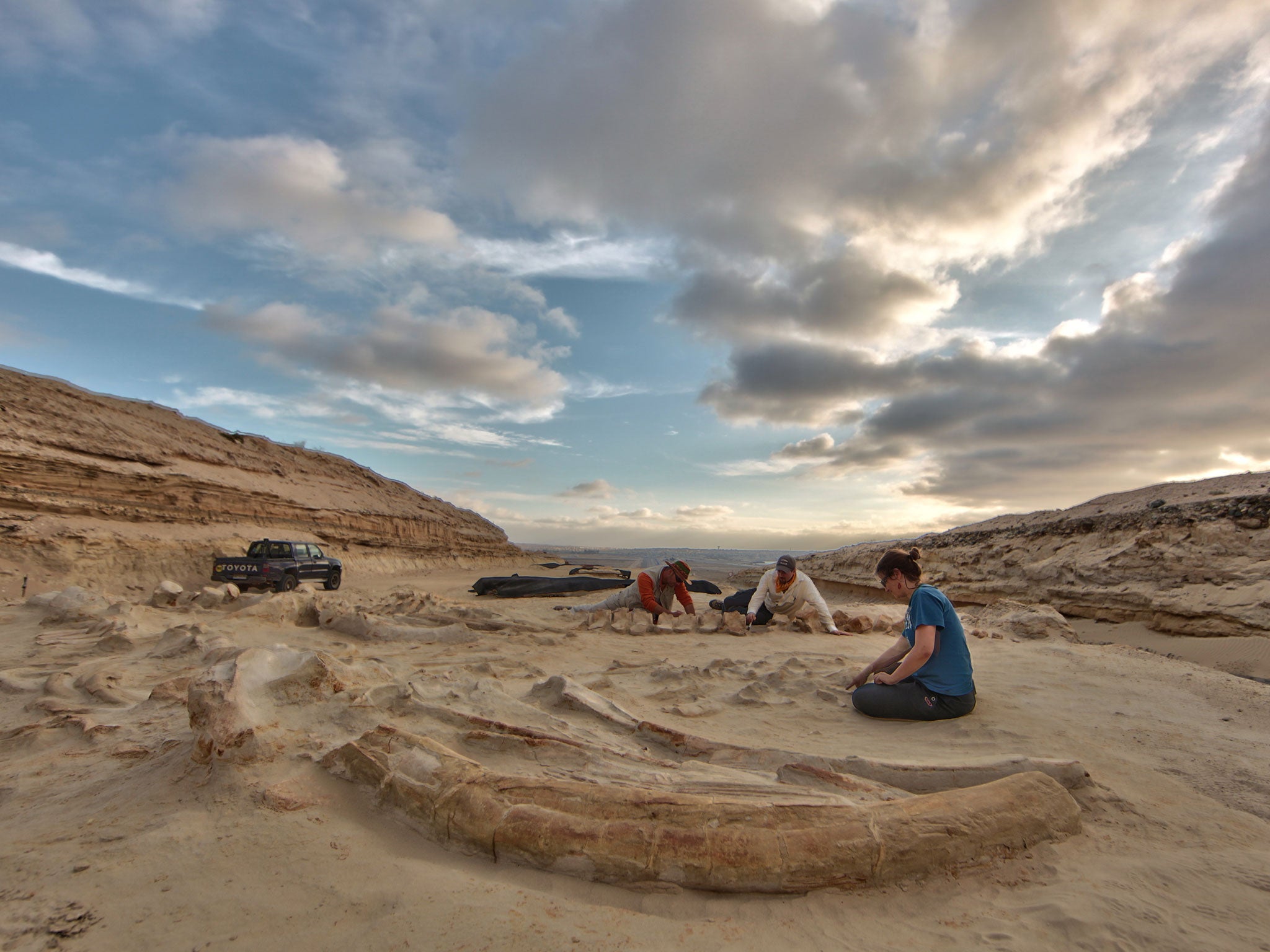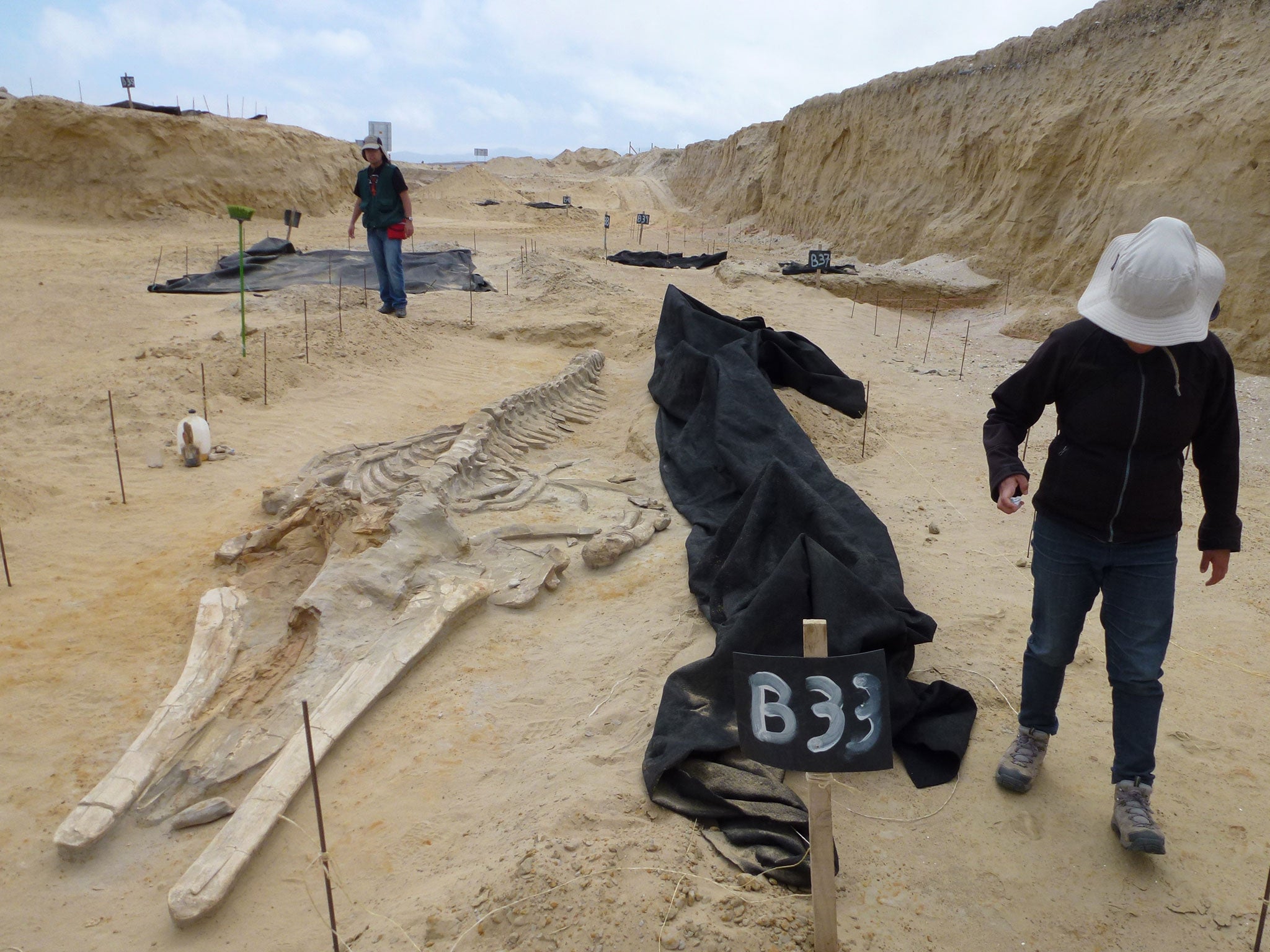Huge find of whales in Chile’s Atacama Desert thought to have been caused by mass strandings after animals ingested toxic algae

Scientists believe they have unravelled the mystery behind a graveyard of whales dating back five million years uncovered beside the Pan-American Highway in Chile.
A report published today in the Royal Society Journal B suggests the animals, which are one of the most astonishing fossil discoveries in recent years, may have died in four mass strandings after ingesting toxic algae.
The animal carcasses are then thought to have washed into an estuary before becoming buried by sand over time, preserving the fossils.
Northern Chile’s Atacama Desert is well known for preserving whale fossils after the site was discovered during an expansion project of the Pan-American Highway in 2010. Bones could be seen sticking out of rock faces, leading many to nickname the spot Cerro Ballena, or “whale hill”, as a result.

American and Chilean paleontologists were finally given the opportunity to examine properly the fossil beds when a cutting was made to widen the Highway in 2011.
A team from the Smithsonian’s National Museum of Natural History and Chilean scientists had just two weeks to undertake their investigations before the heavy plant returned to complete construction of the new road, according to the BBC.
The team recorded as much detail as possible and created 3D models of the skeletal remains in situ. They also removed some bones from the site to study further in the lab.
In addition to the skeletons of more than 40 large baleen whales that dominated the site, the team documented the remains of an extinct walrus-like whale – dolphins which evolved a walrus-like face – and found skeletons of billfishes, seals and aquatic sloths.
“To me, it’s amazing that in 240m of road-cut, we managed to sample all the superstars of the fossil marine-mammal world in South America in the Late Miocene. Just an incredibly dense accumulation of species,” Nicholas Pyenson, a palaeontologist at the Smithsonian, told the BBC.

The team also noted how the carcasses were arranged. The skeletons, which were nearly all complete, were preserved in four separate levels, pointing to a repeated and similar underlying cause of death. But the different fossil levels suggested it was not one event but four separate episodes spread over a period of several thousand years.
From their research, the scientists concluded toxins generated by harmful algal blooms are likely to have poisoned the animals. If the algae were inhaled or large quantities of contaminated prey consumed, death would have been rapid.
“All the creatures we found – whether whales, seals or billfishes – fed high up in marine food webs and that would have made them very susceptible to harmful algal blooms,” Dr Pyenson said.
The bodies would then have been funnelled into a restricted area by the coastline at Cerro Ballena in the late Miocene period (five to 11-million-years-ago). Once stranded on the tidal flat, the dead or dying animals would have been protected from marine scavengers.
However, the team could not say for certain that harmful algal blooms were responsible for the mass strandings, as there were no distinct algal cell fragments present in the sediments. They did find multiple grains encrusted in iron oxides that could suggest past algal activity.

Dr Pyenson added: “They’re found in algal-like mats all around the site. We can’t say whether those were the killer algae, but they do not falsify the argument for harmful algal blooms being the cause in the way that the sedimentology falsifies tsunami being a potential cause.”